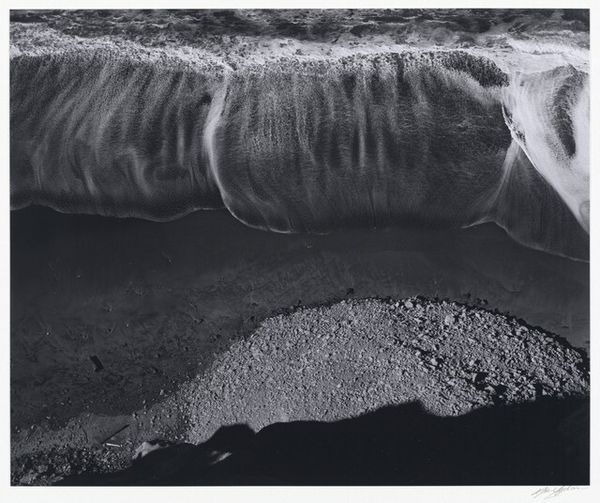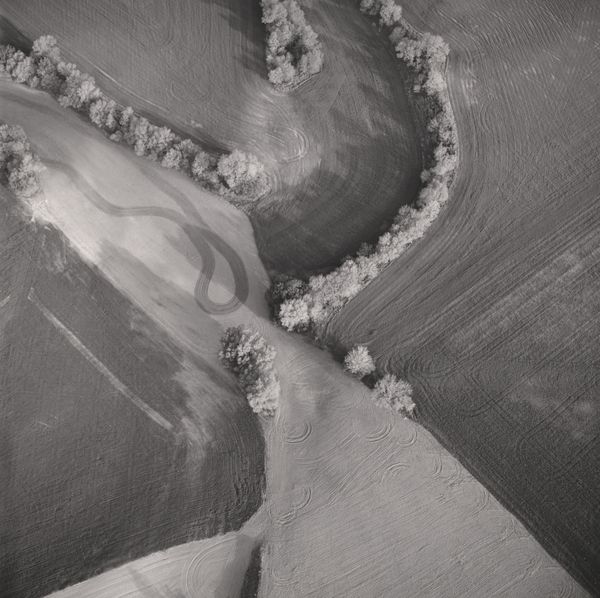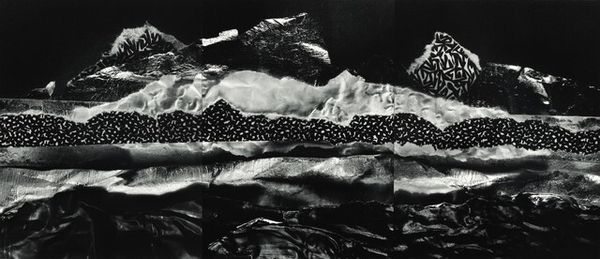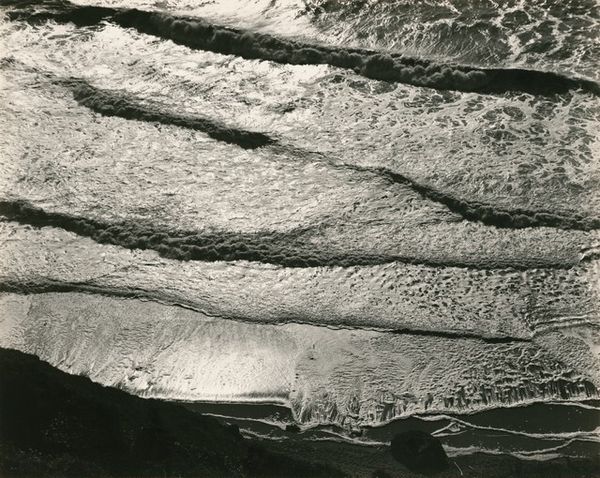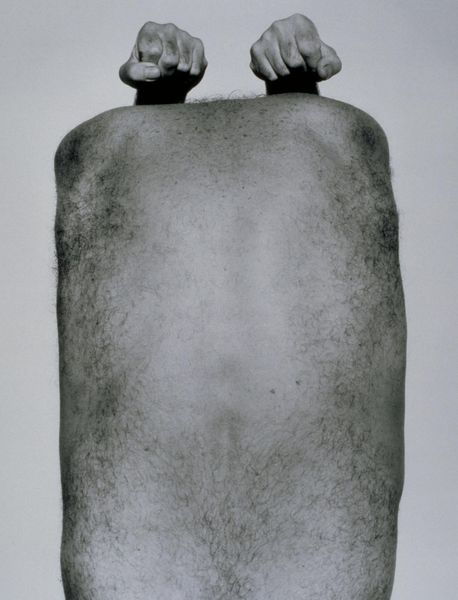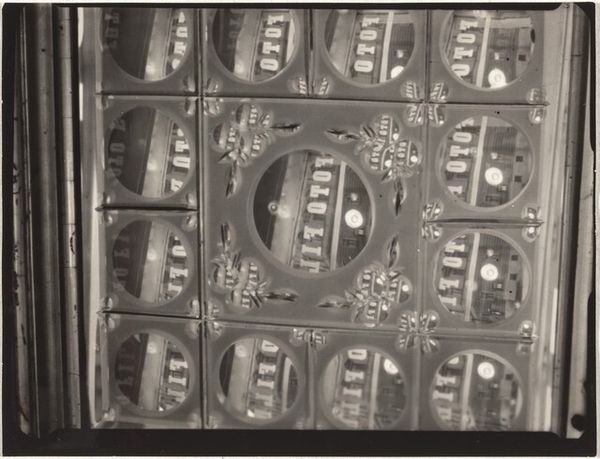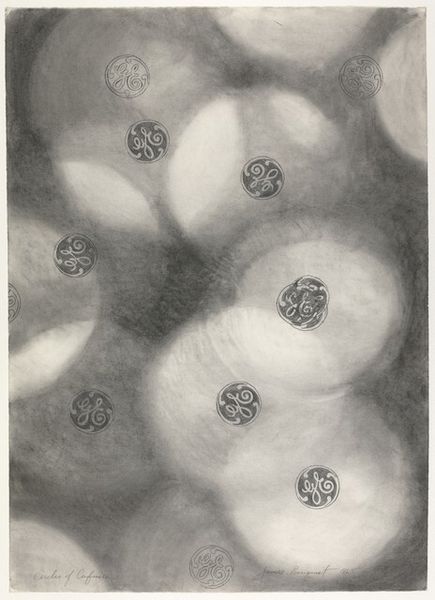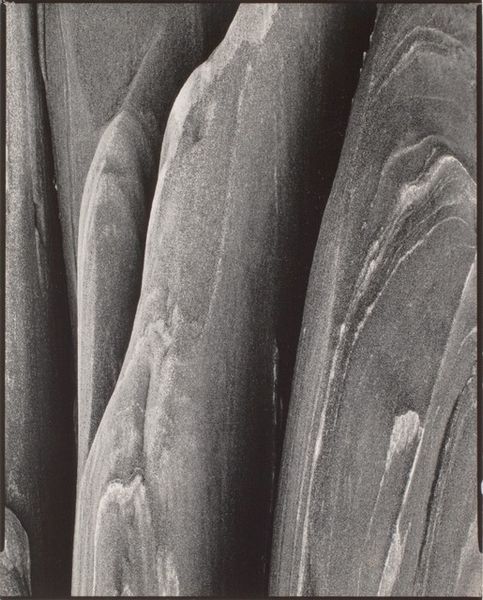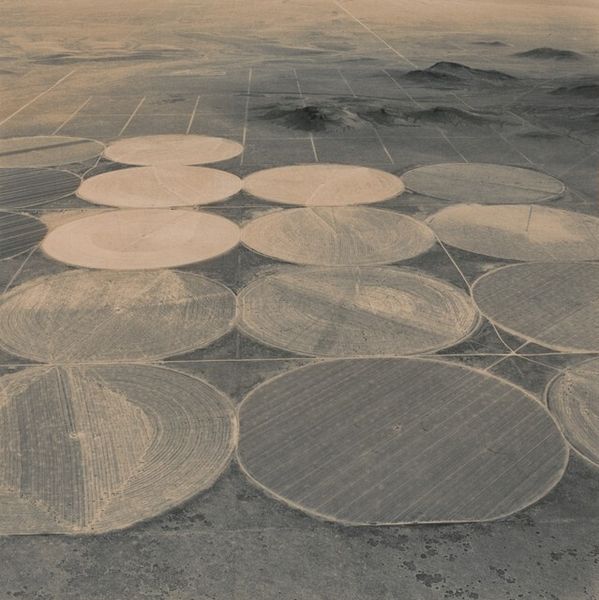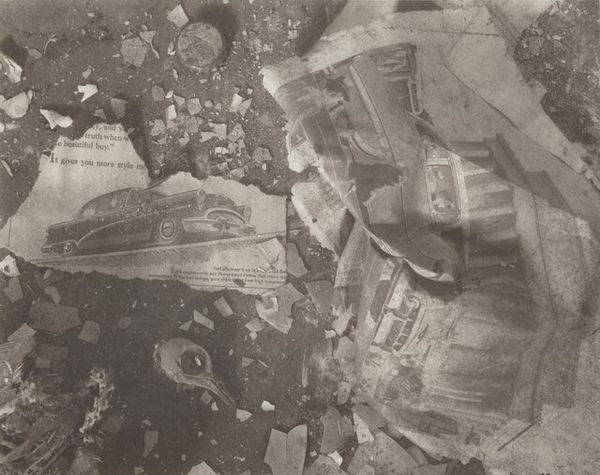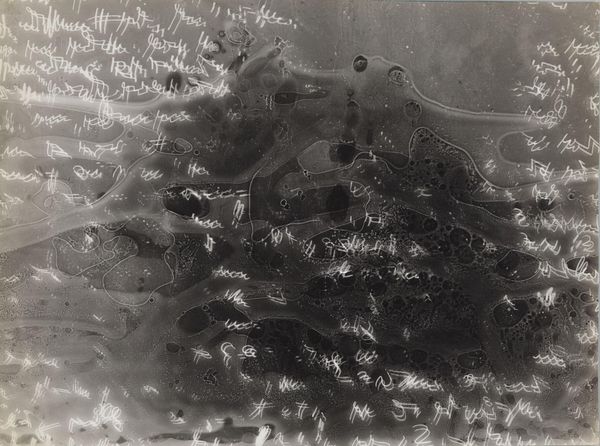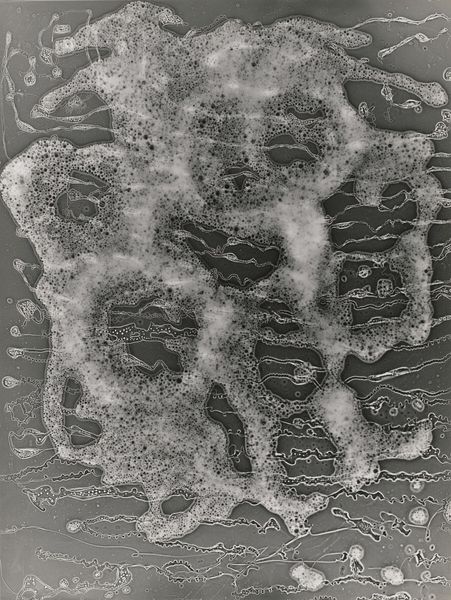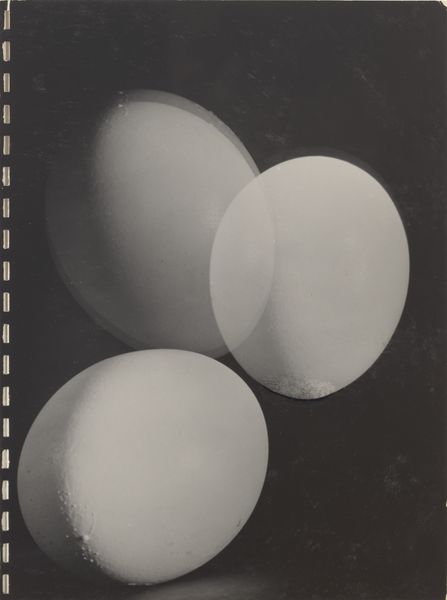
Aeration Pond, Toxic Water Treatment Facility, Pine Bluff, Arkansas Possibly 1989 - 2004
0:00
0:00
#
dark object
#
3d printed part
#
sculpture
#
warm monochrome
#
archive photography
#
unrealistic statue
#
old memory
#
stoneware
#
dark shape
#
monochrome photography
Dimensions: image: 24.4 × 24.3 cm (9 5/8 × 9 9/16 in.) sheet: 35.3 × 27.6 cm (13 7/8 × 10 7/8 in.)
Copyright: National Gallery of Art: CC0 1.0
Editor: This is Emmet Gowin's "Aeration Pond, Toxic Water Treatment Facility, Pine Bluff, Arkansas," potentially taken between 1989 and 2004. It's a black and white photograph from above. The aerial perspective is really striking, and the circular shapes within the water are quite eerie. What stands out to you when you look at this image? Curator: I see a stark visual representation of environmental injustice. The beauty of the photographic composition almost camouflages the grim reality it depicts: a toxic water treatment facility, likely impacting marginalized communities disproportionately. Think about the historical context – Arkansas, Pine Bluff, these locations carry legacies of exploitation, both of land and people. Editor: So the photograph isn't just a record, but a statement? Curator: Exactly. Gowin forces us to confront the devastating consequences of industrial pollution. How do you interpret the circular forms, almost floral-like, juxtaposed with the knowledge of toxicity? Is there a tension between attraction and repulsion? Editor: I see what you mean, there's something deceivingly beautiful about them. Like a strange kind of flower, yet they signify something so harmful. The aesthetic beauty almost normalizes this disaster. Curator: And that, I think, is the crux of Gowin’s commentary. By presenting this reality with an almost clinical aesthetic, he prompts us to question our own complicity and apathy in the face of environmental destruction. What kind of dialogues about corporate responsibility could images like these fuel, even today? Editor: I hadn't considered how actively the picture is speaking. I was initially drawn in by its visual appeal, now it makes me think about how beauty can obscure ugly truths. Curator: Indeed. The power of art lies in its ability to provoke such critical reflections, encouraging us to become more conscious and engaged citizens. This picture reveals environmental problems in the framework of late-stage capitalism, prompting action. Editor: This makes me see the image in a new, important, and critical light.
Comments
No comments
Be the first to comment and join the conversation on the ultimate creative platform.
